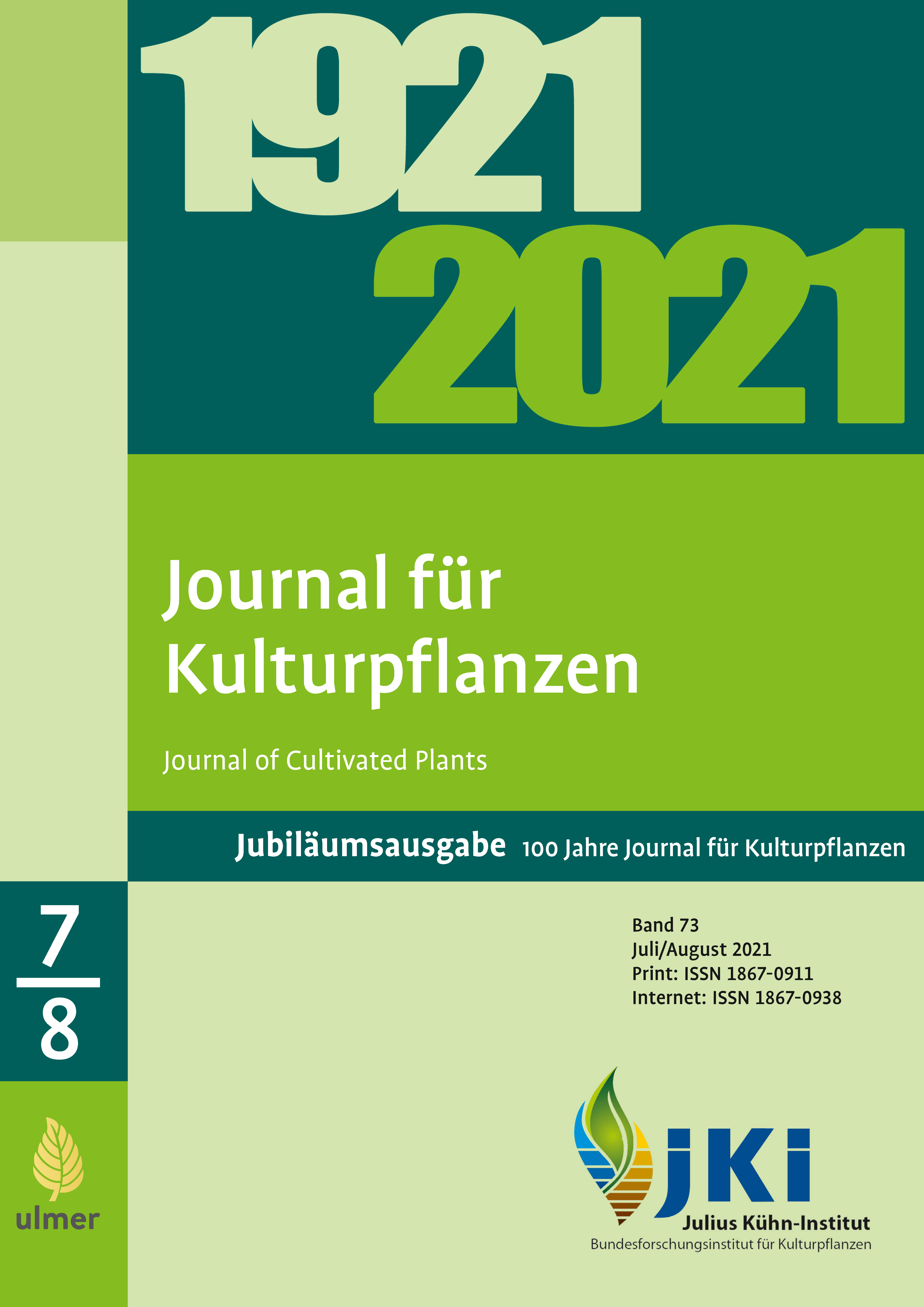Colorado potato beetle (CPB – <em>Leptinotarsa decemlineata</em> (Say, 1824)) in Germany – Control strategies from 1936 to the present day
DOI:
https://doi.org/10.5073/JfK.2021.07-08.06Keywords:
Colorado potatoe beetle, organic farming, plant protection, Spinosad, Neem, Bacillus thuringiensis, Pyrethrum, diatomeen earthAbstract
The history of the Colorado Potato Beetle (CPB) (Coleoptera, Chrysomelidae, Leptinotarsa decemlineata (Say, 1824)) in Germany is an object lesson in the uncontrolled spread of a pest that, without regular control measures, would cause severe yield reductions in one of our most important food crops. Its lack of natural and effective enemies and its tremendous adaptability to pesticides make it a potent adversary that will continue to challenge future generations. Historical pest control of the CPB is traced from its appearance in 1936 to the present. In the past, the intensive and exclusive use of insecticides has always led to resistance to the active substances used. Preventive measures such as keeping a distance of 500 m from the previous year's fields, avoiding potato overgrowth, pre-sprouting and using early varieties are not sufficient to control the Colorado Potato Beetle in the long term. New results in organic farming show the high efficacy of biological control agents of spinosad and neem. In the future, resistance properties of wild species (e.g. leptin glycoalkaloids) can be used within classical breeding methods to breed resistant potato varieties and thus contribute to an integrated pest management concept against Colorado Potato beetle. In gardens and on small fields, hand collection also remains an effective control measure.
Downloads
Published
Issue
Section
License
Copyright (c) 2021 Stefan Kuehne

This work is licensed under a Creative Commons Attribution 4.0 International License.
The content of the journal is licensed under the Creative Commons Attribution 4.0 License. Any user is free to share and adapt (remix, transform, build upon) the content as long as the original publication is attributed (authors, title, year, journal, issue, pages).
The copyright of the published work remains with the authors. The authors grant the Journal of Cultivated Plants, the Julius Kühn-Institut and the OpenAgrar repository the non-exclusive right to distribute and exploit the work.







